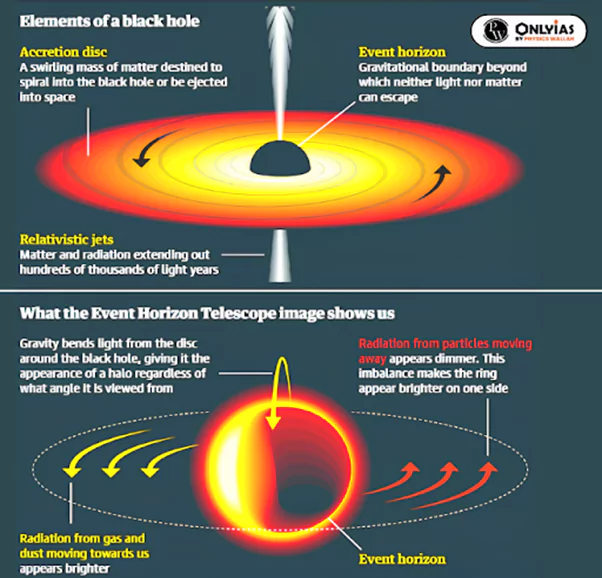Continuing from Part-01: Formation of Stars Part-I
Introduction to Formation of Stars
The formation of stars is a cosmic process in which massive clouds of gas and dust come together under the influence of gravity to give birth to brilliant celestial objects. These stellar nurseries, known as molecular clouds, provide the raw materials for the creation of new stars.
As these clouds condense and heat up, they ignite nuclear fusion in their cores, marking the beginning of a star’s life. The journey from the cold darkness of space to the radiant brilliance of a star is a fundamental and mesmerizing aspect of the universe’s story.
Stellar Remnants: Exploring the Formation of Stars
- Stellar remnants are the leftover remnants of stars that have reached the end of their evolutionary lifecycles.
- They can take various forms and are essential in understanding the complex processes that occur during a star’s life and death.
- Types of Stellar Remnants:
- White dwarfs
- Neutron stars
- Black dwarfs
- Black holes
- Blue dwarfs

White Dwarf: Star Formation, Characteristics, and Cosmic Significance
- Definition: A white dwarf is a very small, hot star. It is the remnant core of a low to medium-mass star that has exhausted its nuclear fuel and underwent gravitational collapse.
- Size and Density: They are incredibly dense objects, roughly the size of Earth but with masses comparable to that of the Sun. This extreme density results from the gravitational forces compressing the star’s core during its evolution.
- Formation: It forms when a star like our Sun reaches the end of its main-sequence phase and expels its outer layers, leaving behind a hot, dense core composed mainly of carbon and oxygen.
- Lack of Nuclear Fusion: They no longer engage in nuclear fusion reactions.
- They have exhausted their nuclear fuel during earlier stages of their evolution.
- Stability: These objects are supported by electron degeneracy pressure.
-
- The electrons in a white dwarf are densely packed and resist further compression due to the Pauli exclusion principle.
- Temperature:They are initially very hot, with surface temperatures reaching tens of thousands of degrees Celsius.
- However, they gradually cool down over billions of years.
- Longevity: They have extremely long lifespans. Over trillions of years, they cool and fade away, eventually becoming dim celestial remnants known as “black dwarfs” (though none have had enough time to reach this stage in the current age of the universe).
- Scientific Importance: White dwarfs are important objects in astrophysics as they represent the final stages of evolution for stars like our Sun.
- They also provide insights into degenerate matter and stellar remnants.
From White Hot to Absolute Zero: The Journey of Black Dwarfs
- Formation of Black dwarfs are theoretical objects that represent the end stage of stellar evolution for white dwarfs.
- Formation of star: Black dwarfs are thought to be the end product of white dwarfs that have exhausted their thermal energy, becoming too cold to emit visible light or any significant radiation.
- Cooling Process: White dwarfs cool down over a very long time, releasing their stored heat energy into space.
- It is estimated that it would take longer than the current age of the universe for a white dwarf to become a black dwarf.
- Characteristics: Black dwarfs are extremely cold objects, with temperatures approaching absolute zero (-273.15°C or -459.67°F).
- They would appear completely dark and would not emit any visible light, making them nearly impossible to detect directly.
- Notable Example: No actual black dwarfs have been observed because the time required for them to cool to this stage exceeds the current age of the universe.
- Therefore, black dwarfs are currently theoretical objects.
| Notable Examples: |
|
- Significance: While they have not been observed, they are important in theoretical astrophysics and cosmology.
- The concept of a black dwarf helps us understand the long-term fate of white dwarfs and the eventual cooling of stellar remnants.
- Cosmic Timescales: The age of the universe is currently estimated at around 13.8 billion years, and it is not yet old enough for any white dwarf to have cooled and become a black dwarf.
- This underscores the immense timescales involved in the evolution of stellar remnants.
Other Formations of Star
| Property | Neutron Star | Pulsar | Magnetar |
| Formation | Formed after a supernova | Produced from a neutron star | Produced from a neutron star |
| Composition | Mainly composed of neutrons | Mainly composed of neutrons | Mainly composed of neutrons |
| Density | Extremely dense | Extremely dense | Extremely dense |
| Gravitational Pull | High gravitational pull | High gravitational pull | High gravitational pull |
| Rotation Speed | Varies, not necessarily high | High speed of rotation | Slow speed of rotation |
| Magnetic Field | Strong magnetic field | High magnetic field | Extremely strong magnetic field |
| Pulsating Light | Not necessarily pulsating | Pulsating light | Not necessarily pulsating |
Beyond the Event Horizon: Unveiling the Mysteries of Black Holes
A black hole is an extremely dense region in space where the gravitational pull is so strong that nothing, not even light, can escape from it. It forms from the remnants of massive stars.

- Formation: Black holes are formed when massive stars, typically those at least 20 times the mass of our Sun, exhaust their nuclear fuel and undergo a gravitational collapse.
- This collapse causes the star’s core to condense into a singularity, surrounded by an event horizon.
- Event Horizon: The event horizon is the boundary around a black hole beyond which nothing can escape, not even light.
- It is often referred to as the “point of no return.“
- Types of Black Holes:
- Stellar Black Holes: Formed from the remnants of massive stars. Examples include Cygnus X-1 and V404 Cygni.
- Intermediate-Mass Black Holes: These have masses between stellar and supermassive black holes. Observations of them are relatively rare.
- Supermassive Black Holes: Found at the centers of most galaxies, including the Milky Way. Sagittarius A* is the supermassive black hole at the center of our galaxy.
- Gravitational Effects: Black holes have an extremely strong gravitational pull.
- Objects that get too close can be pulled into the black hole, creating intense tidal forces and immense spaghettification.
- Cosmic Significance: Black holes are crucial for understanding the structure and evolution of galaxies.
- They also provide insights into the fundamental laws of physics, especially the interplay between gravity and quantum mechanics.
- Scientific Exploration: The study of black holes is a vibrant area of astrophysical research, and new discoveries continue to expand our understanding of these enigmatic cosmic objects.
Importance of Black Hole:
About LIGO:
|
Blue Dwarf: The Cosmic Transformation of Aging Red Stars
- A “blue dwarf” is a theoretical category of stars that is expected to form from a “red dwarf” star after the red dwarf has used up a significant portion of its hydrogen fuel.
- Red dwarf stars are known for their slow hydrogen fusion and full convective processes, which enable them to burn their entire hydrogen supply rather than just the core.
- This unique characteristic gives red dwarfs extremely long lifespans, potentially lasting trillions of years.
- However, as of the current age of the Universe, there hasn’t been enough time for any red dwarfs to transform into blue dwarfs.
- The existence of blue dwarfs is anticipated based on theoretical models and predictions about the future evolution of such stars.
UPSC Civil Services Examination, Previous Year Question (PYQ)Q. Consider the following phenomena: (2018)
Which of the above is/are the predictions/predictions of Albert Einstein’s General Theory of Relativity, often discussed in the media? (a) 1 and 2 only Ans: (d) Q: Recently, scientists observed the merger of giant ‘blackholes’ billions of light-years away from the earth. What is the significance of this observation? (2019)
Ans : B |































